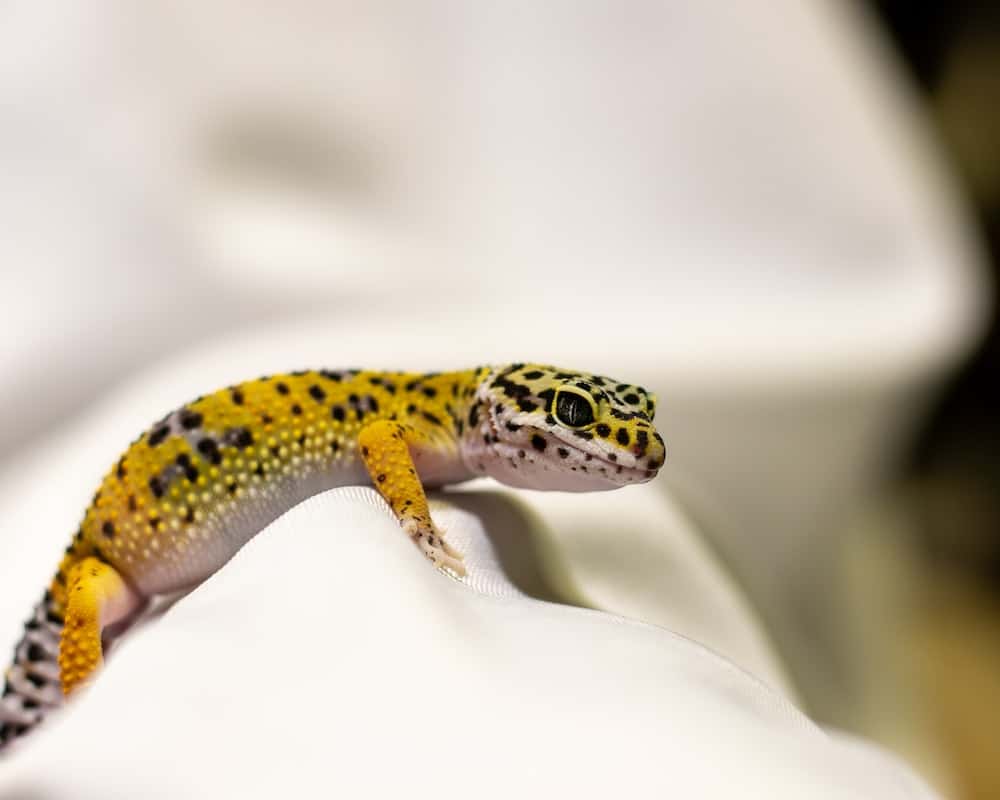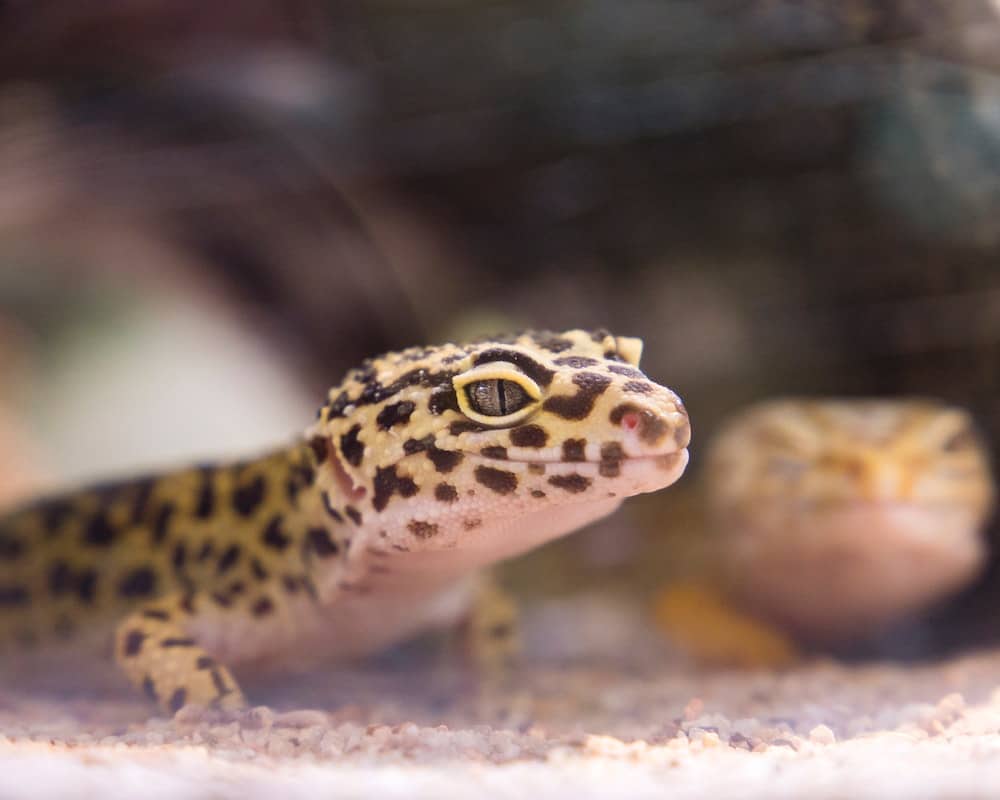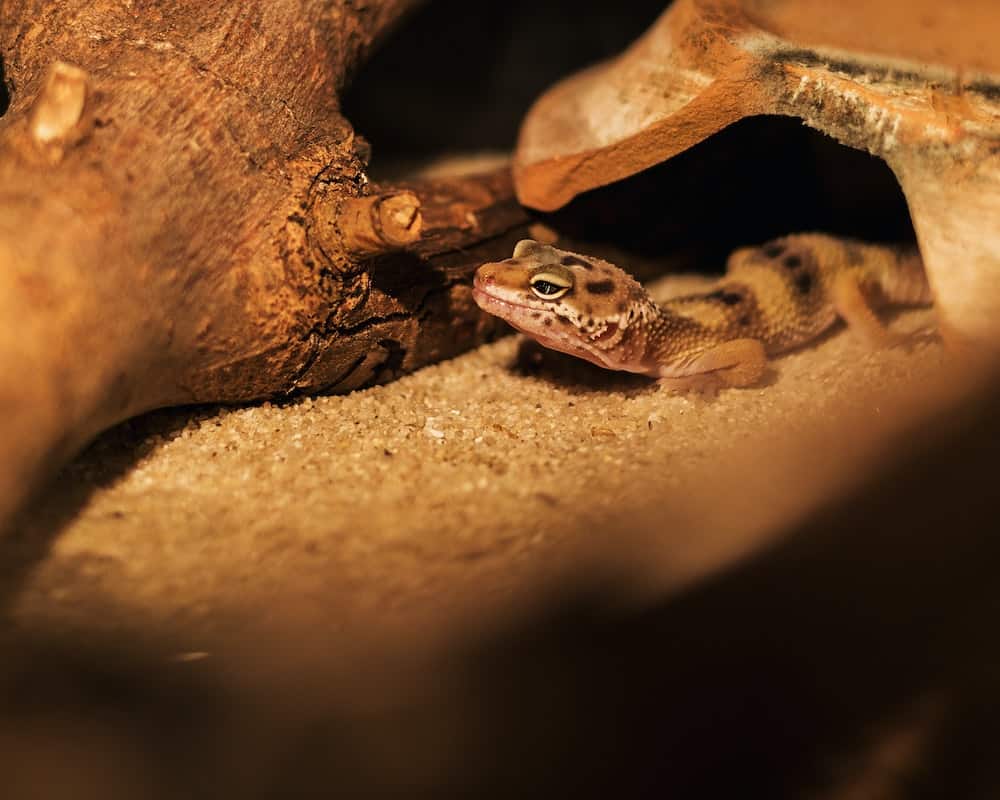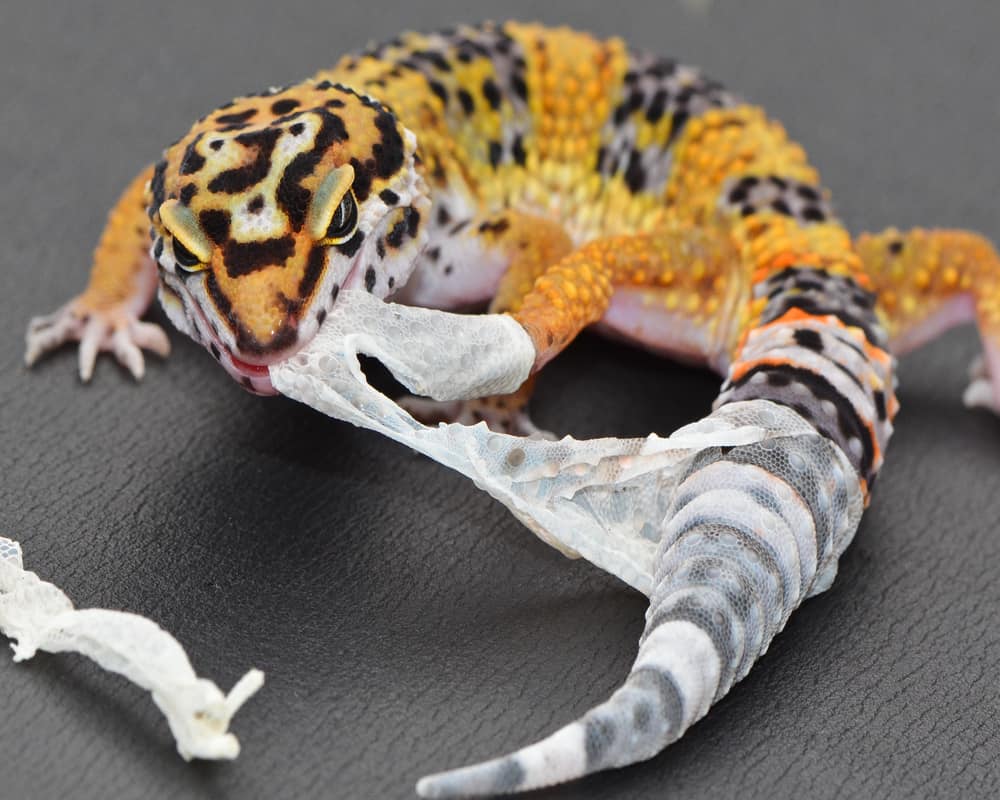The reason why your leopard gecko looks pale could be because it is shedding. This is often the most common cause, and you should not be worried about it. However, if your leopard gecko looks pale when it is not in the shedding season, then some health concerns could be why it looks pale.
Why Is My Leopard Gecko Pale? – Most Common Cause
The leopard gecko has the generic name Eublepharis. It belongs to the class Reptilia in animal taxonomy. Like most reptiles, they shed their skin regularly.
The outermost layer of their skin is called the epidermis. Epidermis protects a layer of skin below- called the dermis. The epidermis is in the form of scales. These scales protect the lower skin layer from bacteria and prevent moisture from escaping their bodies.
While shedding, these scales are replaced by a newer set of scales.
An adult leopard gecko will shed every 4-6 weeks. At the same time, a juvenile leopard gecko will shed more often, almost every month. It is roughly 2-3 days before they start shedding that the color change occurs.
Fun Fact: Leopard Geckos eat their own shed – Read more…
A leopard gecko’s skin color comes from melanocytes and chromatophores. Epidermis contains the melanocytes. Melanocytes contain melanin which is responsible for the darker pigmentation of the skin.
During shedding, the melanin from the melanocytes gets transferred to the new growing cells below it. The transfer of melanin causes the skin to lose its darker pigmentation and makes it look pale and whitish-gray.
Since shedding is normal, there is nothing to worry about if your leopard gecko seems pale during this phase.
You can look at the entire leopard gecko’s shedding process in this video.
How to Assist Your Leopard Gecko While It Is Shedding?
Shedding is a painful and stressful process for your leopard gecko. Thus, along with looking pale, you may also notice any behavioral changes in your pet.
They may also lose their appetite till shedding is done completely. It takes a few days for your leopard gecko to completely shed off the old skin.
It is, therefore, essential to take care that you prevent any further stress to your leopard gecko. Below are a few things that you can follow to make the entire process a bit easier for your pet:
- You can avoid stressing your pet by limiting physical contact with it or handling it altogether. If at all you do have to handle it, take the precaution to be extremely gentle with it.
- Leopard geckos tend to isolate themselves while shedding, so ensuring they have a space to isolate themselves in their enclosure can also help.
- The leopard gecko usually takes 24 hours to get out of its old skin. You should only intervene if, even after 24 hours, the skin has not come off completely.
- To help complete the shedding process, it is advisable to soak your leopard gecko in a shallow dish containing warm water. Bathing them in warm water allows them to shed the remaining skin. However, ensure you wash your hands thoroughly before batting your pet. It will prevent the transfer of any harmful microorganisms that may harm and infect your leopard gecko.
- If you are new to this, you can consult your vet for specific ways to handle and bathe your leopard gecko.
Other Possible Causes Why Your Leopard Gecko Looks Pale
Shedding is not the only reason why a leopard gecko may look pale. There are other reasons which could be the reason why your pet suddenly looks pale. It is important to understand these reasons and seek help from a veterinarian doctor when required.
Following are some of the reasons why your leopard gecko can look pale:
- Illness
Bacterial and fungal infections can cause your leopard gecko’s skin to turn whitish or have discolored white patches. Bacterial infections like stomatitis can cause them to have stress or loss of appetite. Because of these reasons, your pet can turn pale.
- Parasites
Leopard geckos feed on a wide variety of insects. Some of these insects sometimes contain parasites. These parasites can cause gastrointestinal problems in your leopard gecko.
Skin discoloration often occurs with these problems, and your pet may look pale. Try to observe your leopard gecko for any physical symptoms of gastrointestinal problems. Some of the physical symptoms are diarrhea or bloody stools.
If these symptoms are observed, it is crucial to get your leopard gecko treated immediately.
- Malnutrition
A lack of a nutritious diet can affect the overall well-being of your leopard gecko and make it prone to infections and stress. If your pet is not on a healthy diet, it can look pale due to a lack of nutrients or because it has developed any disease due to lower immunity.
- Impaction
Impaction is another cause of discoloration of a leopard gecko’s skin. If your leopard gecko has ingested any more giant insects or harder foodstuff, it can cause impaction in your leopard gecko.
Impaction can also be caused if your leopard gecko consumes any soil, sand, or substrate matter used in the vivarium. Whether your pet is suffering from impaction or not can be determined by a vet, and it is recommended to consult a vet for this problem.
- Stress
Stress is another reason why your leopard gecko can turn pale. If there are any recent changes in the environment for your leopard gecko, it may turn pale and look discolored.
Some common reasons for stress in leopard geckos include:
- Often newly bought leopard geckos can seem pale as they are new to your environment and house. A leopard gecko takes 3 to 6 weeks to get used to a new environment.
- Stress can also be induced if the live insects used for feed bother your leopard gecko by biting or scratching them.
- If the vivarium consists of two or more leopard geckos, sometimes, one of them could bully the other and become the cause of stress for the bullied leopard gecko.
- Making too many changes to the pet enclosure or having too small an enclosure can also induce stress in your pet.
- The inability to deliver eggs or egg binding in female leopard geckos can also cause stress and, therefore, the paleness of the skin. This condition also needs medical intervention.
- Shedding Trouble
If your leopard gecko is having trouble while shedding, it’s suffering from a condition called Dysecdysis.
Dysecdysis can cause patchy and dry skin, making your pet look paler. It is a condition to be treated with the help of a vet.
Behavioral Changes to Lookout For in Leopard Gecko
When your leopard gecko goes through health-induced or environmental stress, observing it for any behavioral changes is crucial.
Regularly, leopard geckos are calm and peaceful creatures.
However, when they are stressed either due to shedding or some other factors, watch out for these behavioral changes:
- Lethargy and dullness
- Loss of appetite
- Increased hiding in hiding spaces
- Digging into substrate
- Constipation or irregular bowel movement
More prolonged exposure to stress can impact your leopard gecko’s health in the long run. It is, therefore, important to address any causes affecting your pet’s health.
When Should You Go to the Vet?
If your leopard gecko is in the shedding phase and is lethargic, and has lost its appetite, there is no need to worry if your pet seems pale.
However, suppose it has not returned to its original behavior or the paleness of the skin persists. In that case, looking out for any behavioral or physical symptoms is essential, and immediately consult the vet.
Physical symptoms, if not treated on time, can be fatal for your leopard gecko.
Precautions to Prevent Illnesses and Poor Health Conditions in Leopard Geckos
It is essential to understand what could be the reasons behind commonly occurring health issues or stress concerns in your leopard gecko. Some of the measures you can take to prevent any health issues in your leopard gecko are:
- Identifying and removing any stress factors that might be impacting your leopard gecko.
- You are ensuring a healthy and clean parasite-free diet. Ensure you provide a nutritious diet by dusting it with nutrients and gut-loading the insects you feed.
- Remove all live insects except mealworms within 15-20 minutes lest they trouble or harm your leopard gecko.
- Provide an optimal environment and hiding spaces for your leopard gecko.
- In case you have multiple leopard geckos, providing a wide enough space so that they can establish their territories and providing multiple hiding spaces will reduce the occurrences of bullying and therefore stress in your pets.
- Avoid using sand or substrate that your leopard gecko can ingest.
- Provide healthy living conditions for your pet by maintaining optimum temperature, humidity, and habitable conditions.
Conclusion
Paleness in your leopard gecko is a normal sign during shedding and you should not worry too much about it. However, if the paleness persists or occurs irrespective of the shedding season, then it is wise to monitor your leopard gecko and identify the cause of paleness and consult a vet accordingly.




